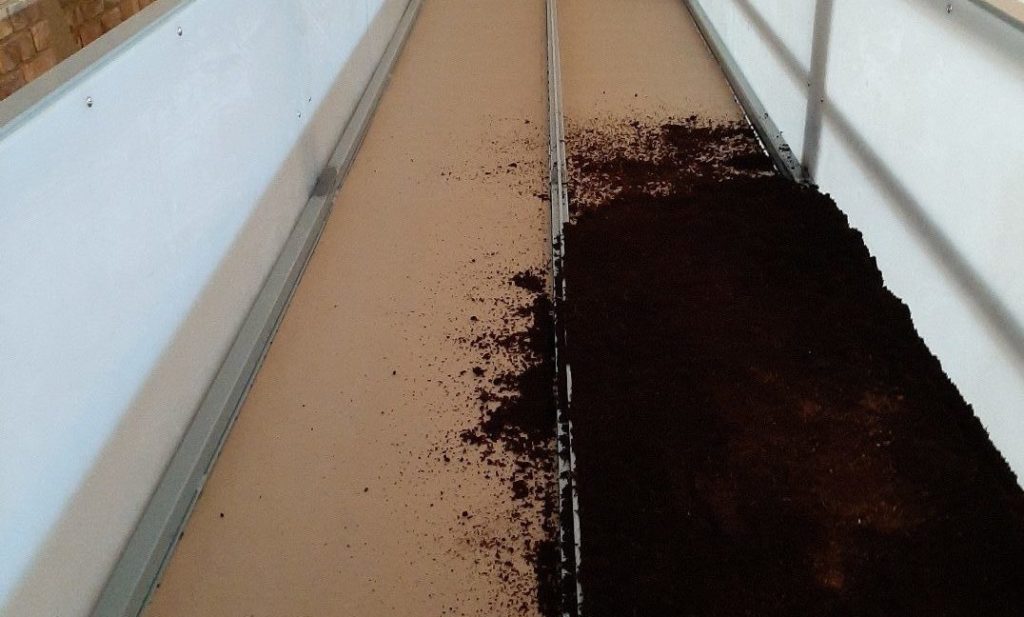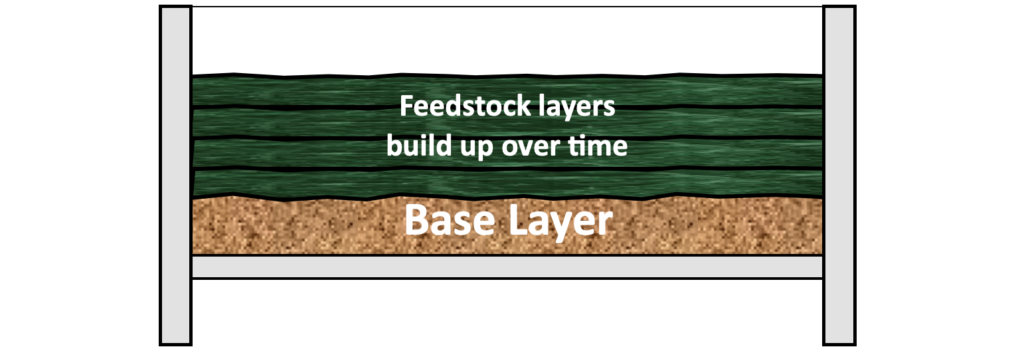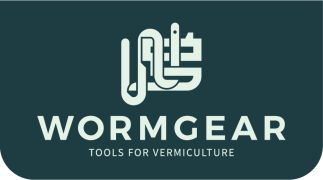Install the base layer
Once you have finished lining your CFT with paper, you will add a ‘base layer’ of peat moss without disturbing the paper—this layer is for startup only. It provides no food for the worms, but it serves a few important purposes:
- Provides a nesting area for the worms beneath the food layers
- ‘Hides’ the paper liner below so the worms don’t consume it
- Encourages the worms to stay up near the food at top
- Acts as a foundation until the continuous flow process begins with the first harvests
Peat moss is my preferred material for the base layer. Worms will naturally use it as a bedding but will not consume it or hunt for food there.
Your base layer should be about 4 inches deep. Start with 2 bales of dry compressed peat per module.

It is important to thoroughly rehydrate the dry peat moss before adding it to the bin. It will nearly double in volume when moistened and fluffed.
The base layer will eventually break down and get partially mixed with the layers above, but by then there will be plenty of depth for the worms to retreat to.
A trick to pre-wetting dry peat moss is to add a few drops of Dawn dish soap to a tub half full of warm water. The surfactant in the soap will speed up the absorption. Place the entire bale or half a bale in the tub and let it soak up the water for a few hours.
Coco byproduct (coir) is a popular alternative to peat, but I advise against it for CFT use. Its fibrous strands and denser texture cause problems with the first harvests—it’s difficult to pull the cutting bar through it.
A different alternative is to use mature, stabilized compost for the base layer. That can work, but the worms may still be interested in it. We want to do everything we can to encourage the worms to stay near the top surface.
Check that the base layer is moist throughout, and water it again if needed. The paper liner should be wet from contact with the wet base layer after an hour or so. Check from underneath—the lining paper should be wet but not dripping.

Add the first feedstock layer
With the base layer in place, add your initial food layer on top, also about 4 inches thick. This should be pre-composted and thermally stable feedstock, which is an easy material for the worms to adapt to. Avoid green un-composted materials that will heat up—like food scraps or green yard waste—until the worms have gotten established in their new home.
Leave the first food layer to settle in for a day or two before adding your worms. Check the temperature of the food layer to be sure it is not heating much above air temperature.
If you can time it right, have your new worm livestock arrive just in time to add to their new habitat.
Composting worms are top feeders, but they will explore every nook and cranny. Do not be surprised if a few find their way out of the CFT. The sooner we can establish the regular top-feeding routine, the better.
See Feeding Your CFT for a discussion on different feedstocks.


